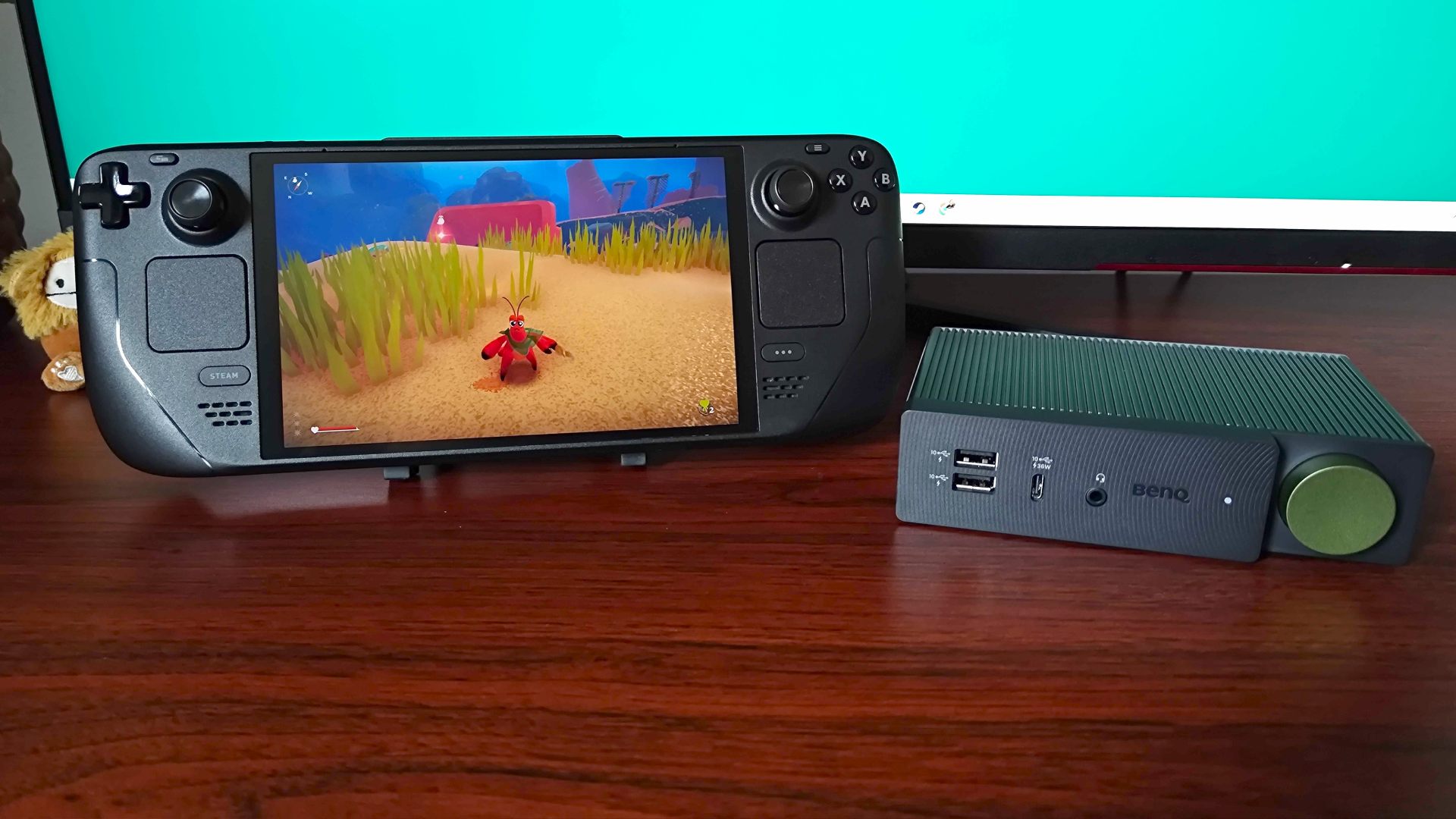GamesRadar+ Verdict
The BenQ BeCreatus is a great premium Steam Deck Dock for anyone who also has a console or laptop as part of their setup. While this option is far too pricey to recommend just for handheld use alone, it’s a worthwhile investment for content creators, streamers, and players with plenty of systems to hand.
Pros
- +
Fantastic build quality
- +
Supports multiple monitors
- +
All the ports you could need
- +
Up to 130W power
- +
HDMI 2.1 support
Cons
- -
Expensive
- -
No KVM switch
Why you can trust GamesRadar+
The idea of spending $300 on something that sounds like a souped-up Steam Deck dock might sound absurd, but the BenQ BeCreatus boasts far more than handheld hub capabilities. Don’t get me wrong, hooking up Valve’s portable powerhouse was top of my priority list when road-testing this premium accessory. However, it’s going to tie together player setups with a console, laptop, and other bits and bobs beautifully, not to mention it’ll supply a tremendous amount of juice to your devices.
I’ve already dropped the main bombshell of this review, but I’ll say it again – the BenQ BeCreatus cost $299. That’s around ten times more than what you’ll pay for our current best Steam Deck dock pick, the Baseus 6-in-1, so I don’t blame you for involuntarily flinching. The thing is, while I’ve been using it as a docking station for my Deck, dubbing it as one is like calling a gaming PC a jukebox, as this 13-in-1 hub is designed to unify your entire setup using something almost the same size as an NES game.
Docking stations of this nature are anything but new, and I’ve used countless work office setups using the same format. The thing is, none of them have felt like they’re designed for a multitude of devices, with most using older USB type A cables and no additional outputs. In contrast, the BeCreatus will pair just as seamlessly with Macbooks as it will with a handheld, all while ensuring you can hop between everything that’s connected. Simply put, it’s everything many content creators and multi-platform gamers could ever want in a hub, providing they have the funds for an extravagant dock.
Specs
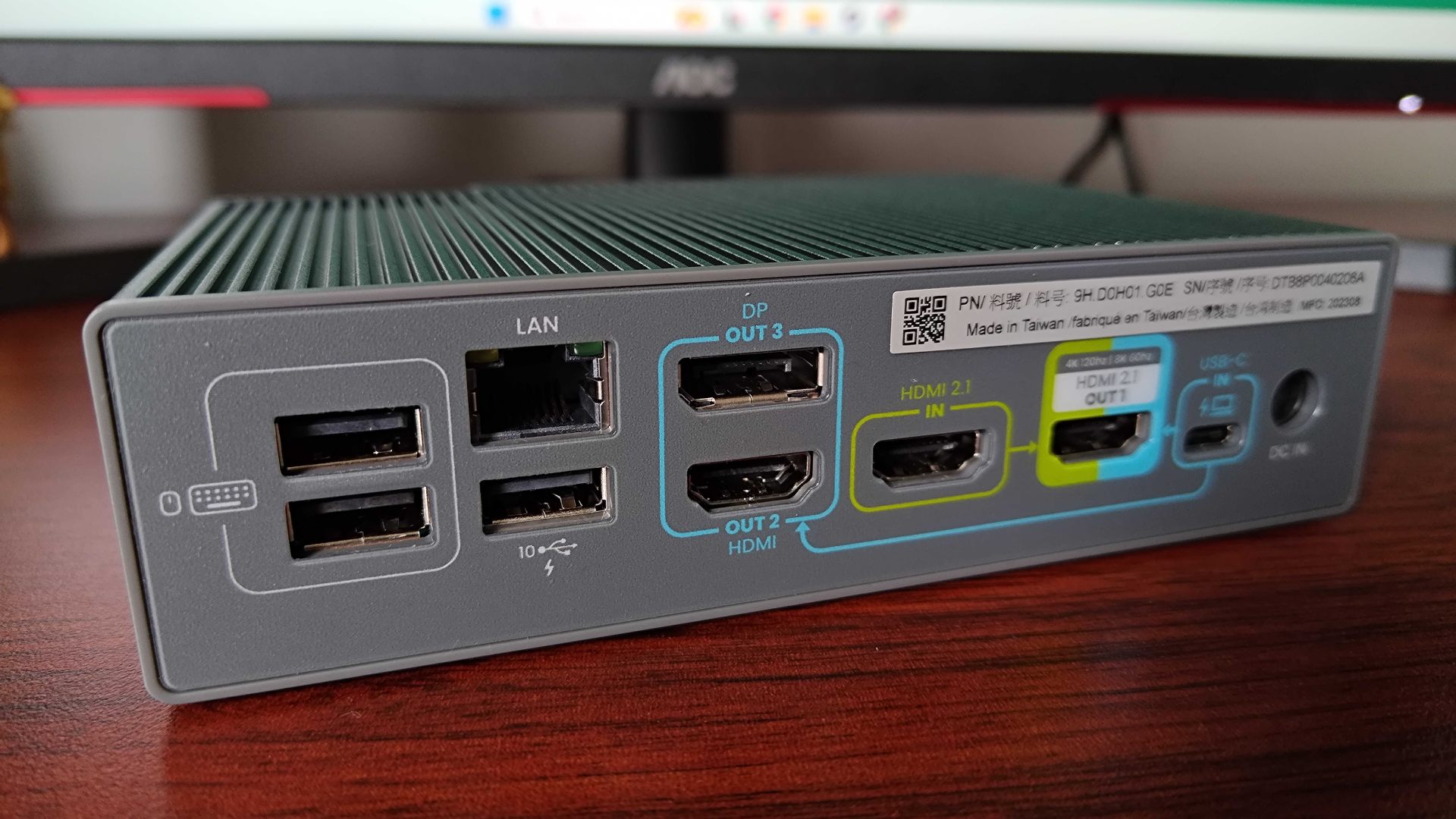
Armed with a total of 13 ports, the BenQ BeCreatus can receive signals via HDMI 2.1 and USB-C and beam them across up to three gaming monitors at 4K 60Hz. You’ll have two HDMI ports and one DisplayPort to make that happen, with a specific HDMI 2.1 option included to cater to players with a PS5 monitor.
| Video output | HDMI 2.1, DisplayPort |
| Ports | 2 x USB-C, 5 x USB-A, 3.5mm headphone jack, |
| Ethernet | 1,000MBps |
| Power Delivery | Up to 130W total |
You’ll also be able to use five USB-A connections and an additional USB-C port at the front to charge devices and, with up to 130W at its disposal, this dock packs a mighty Power Delivery punch. A built-in KVM switch would have served as the garnish on top of this delicious docking station dish, but alas, it’s something this device misses out on.
Design
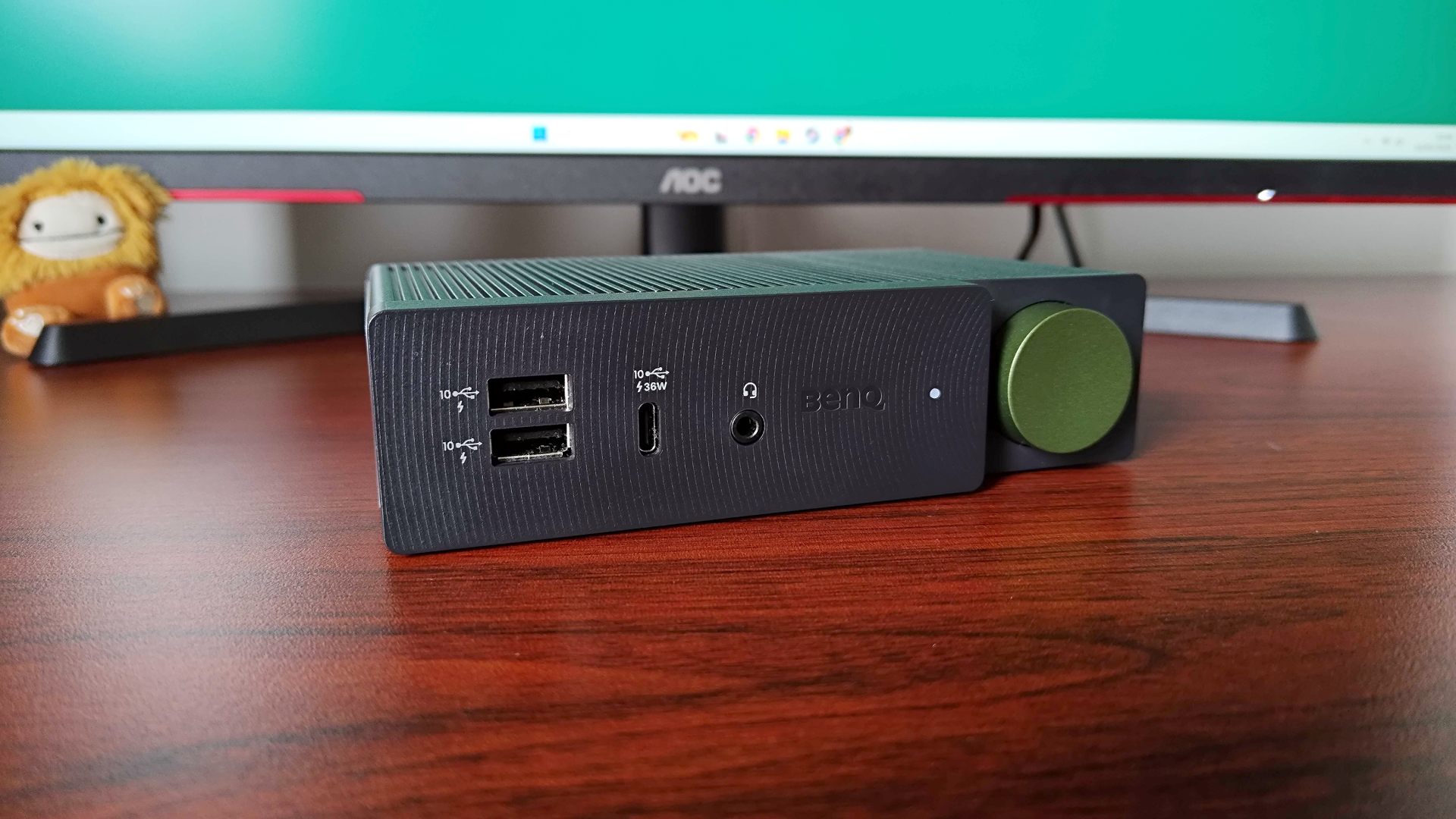
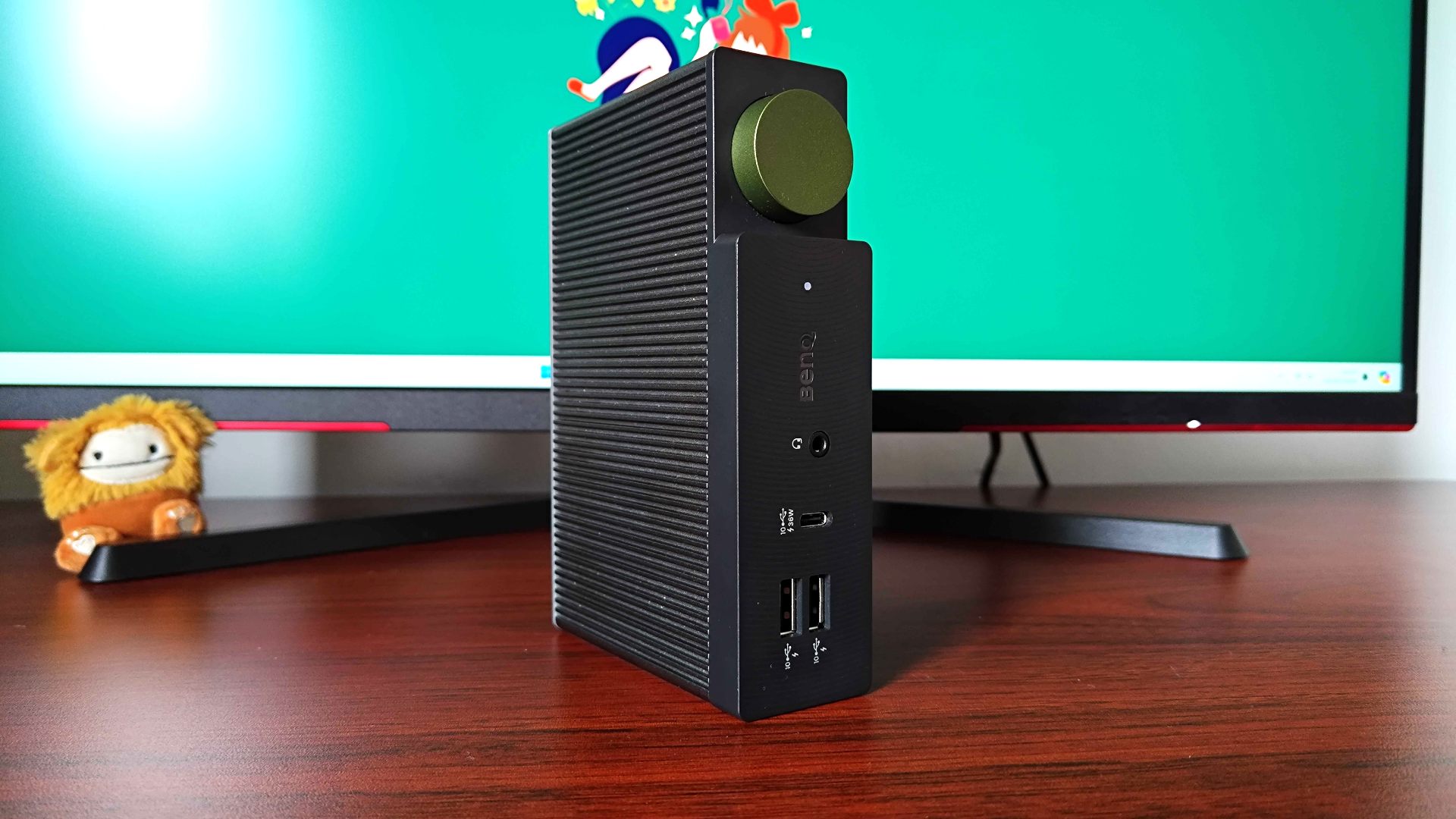

These days, robust build quality is never a given, but the BeCreatus wants you to know it costs a pretty penny. Comprising mostly aluminum (save for its front face and button), the dock is surprisingly weighty for its size, but not in a way that feels unnatural. I’d actually say its vibe gives more premium Hi-Fi equipment than something you’d plug laptops into, which might be thanks to its rounded front button. I was pretty disappointed when I realized this isn’t actually a volume knob, as that would have been a nice touch.
Sandwiched between two corrugated sides is the meat of the BeCreatus, with most of the ports spilling out of the back. That’s no different from most other docking stations, but the fact it keeps two USB-A ports and a Type C at the front means this could be a winner for living room use. Yes, I know, the whole idea is you’re meant to be able to switch from your three-screen Macbook setup to a console instantly, but honestly? The idea of having my PS5 and Steam Deck hooked up to a gaming TV next to the couch through a singular device makes me giddy.
The dock has substantial rubber feet at its base and some discrete strips at its slide, allowing for it to be sat horizontally or vertically for extra gaming desk versatility. One thing I would have liked to see was VESA mounting support, as being able to pop it on the back of a monitor would have been a game-changer. This was included with the Ayaneo Mini PC AM01 I reviewed earlier in the year and, while it’s not a deal breaker, I reckon accessories can really benefit from using bracket mounts too.
Features
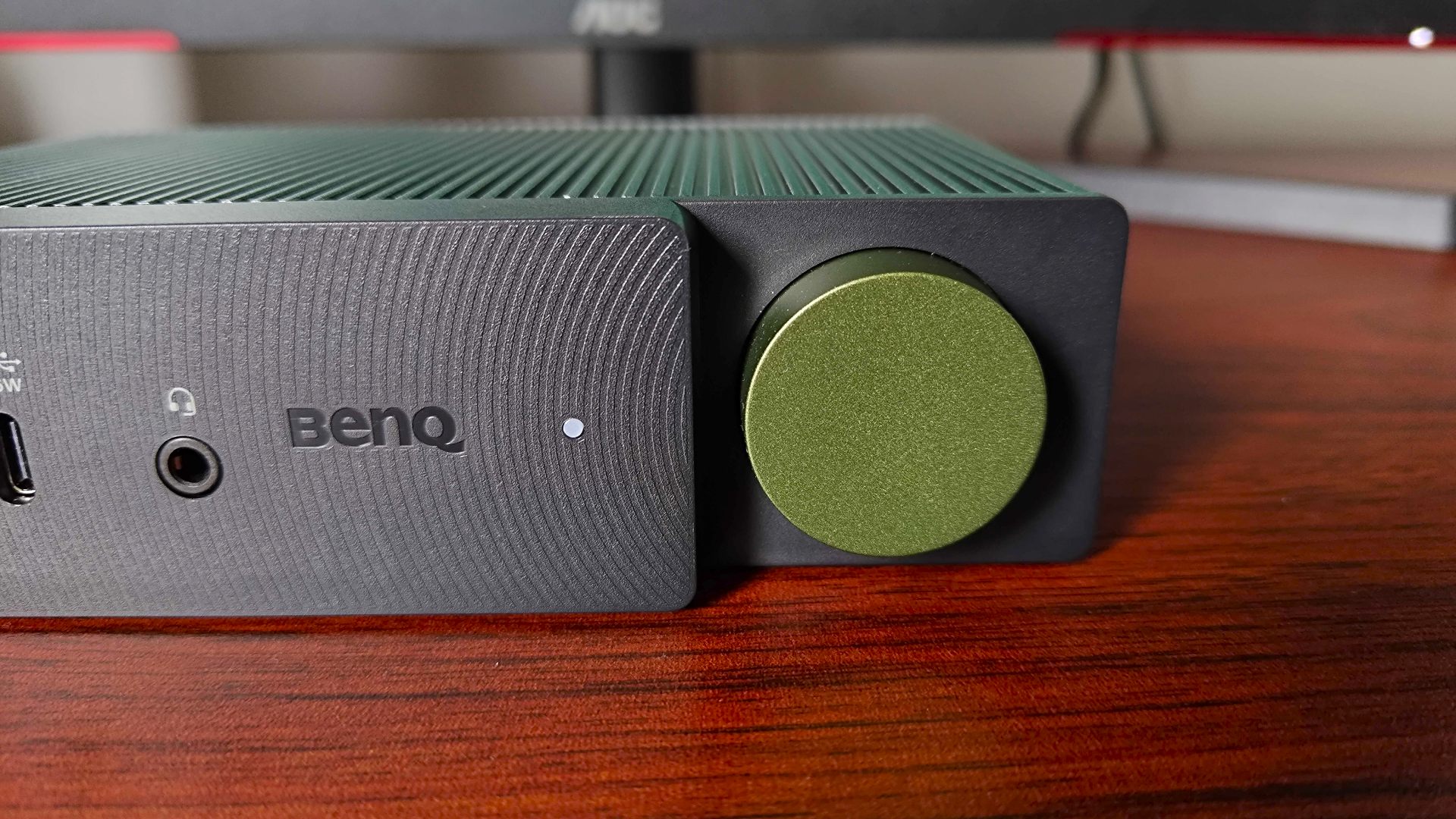
There are two main qualities that I believe truly make the BenQ BeCreatus stand out, even if they aren’t exclusive to the dock. The first is the sheer amount of power it can pump out to your devices and peripherals, as you can do an awful lot with 130W. For context, the Steam Deck OLED uses up to 36W, so you’d have plenty wattage potential left to charge up things like your PC controller, power bank, headset, and other add-ons. Naturally, gutsy gaming laptops will grab a bigger piece of the power pie, and you’ll forgo charging if using something with a higher-wattage mobile GPU.
The other big win the BeCreatus has under its belt is quick source switching, as that big button on the front makes for an easy way to hop between USB-C and HDMI 2.1. I am disappointed that that doesn’t also tie in with some sort of KVM switching, as I’ve tested a bunch of monitors recently that can migrate over connected peripherals between sources.
I guess it makes sense when you view this dock as a means to hop from laptops to consoles, but it would have been a game changer for handheld use if you could use keyboards and mice between devices. Keep in mind that this dock is effectively made to use USB-C for the productivity side of things and HDMI 2.1 for leisure, which explains why BenQ didn’t go down the route of multisystem peripheral integration. If other docking stations for portable PCs started including KVM switches by default, I would come down a bit harder on the BeCreatus, but we’re technically talking about a handy extra.
Naturally, being able to turn your laptop or Macbook into a triple monitor desk setup is also a huge boon. You’ll have to make do with 60Hz if you want to hook into three 4K screens, but that’s not really surprising or an unusual trade-off. I would have liked the hub to take DisplayPort input and output, as it would have helped accommodate my main rig alongside a handheld.
Performance
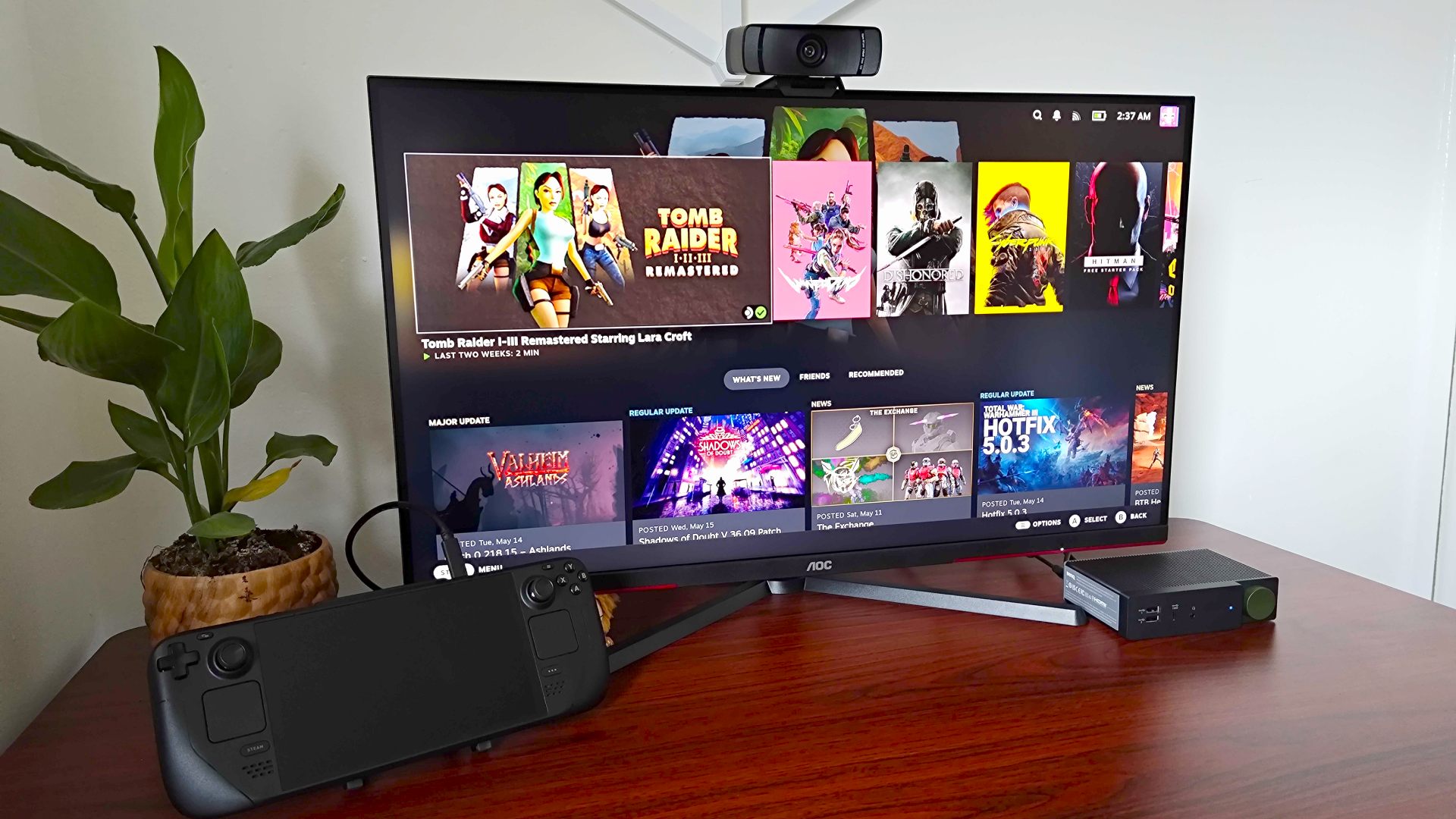
Remember when I said I’ve used many docking stations in my time? I really wasn’t just referring to Steam Deck docks. I was actually working in an office when the big move from traditional workstations to hybrid laptops craze kicked off, so I had to endure some of the jankiest setups around. One of the most common issues that can crop up with traditional laptop docking stations relates to DisplayLink drivers having a freakout and either refusing to work or deciding to mess up things like resolution, scaling, and Windows desktop settings.
However, none of that returned to haunt me when testing the BenQ BeCreatus, the experience overall was as smooth as you’d expect for $300. Popping in both my Steam Deck and laptop allowed me to tap into the dock’s output instantly via USB-C, while the big button on the front reliably switched things over to HDMI. For that, I tried both my PS5 and PC, with both proving to be effective at 4K 60Hz.
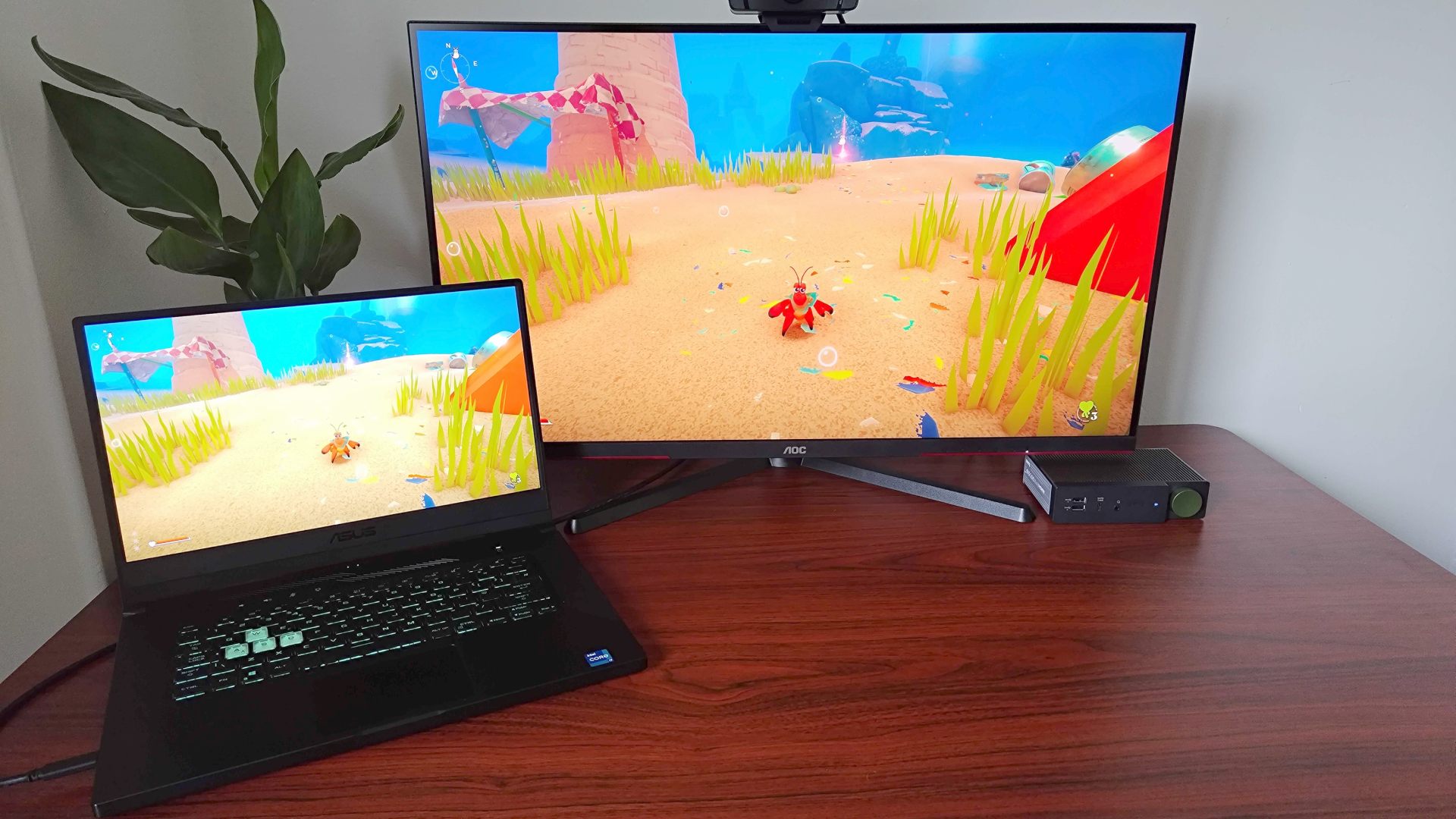
I’m also stoked that the BeCreatus keeps its word when it comes to Power Delivery, as I didn’t have to deal with any shenanigans when charging USB-C devices. I even gave powering my Asus TUF Dash F15 laptop a go and was able to easily run indie adventures like Another Crab’s Treasure. I was wary that the RTX 3070 means the entire system can draw up to 199W, but the 100W provided by the main USB-C connector seemed to work just fine when not completely maxing out its capabilities.
Switching between sources is also instantaneous. I wasn’t able to sniff out any sync issues or anything that’d confuse monitors when changing from USB-C to HDMI, which is great considering the speed at which it operates.
Should you buy the BenQ BeCreatus?
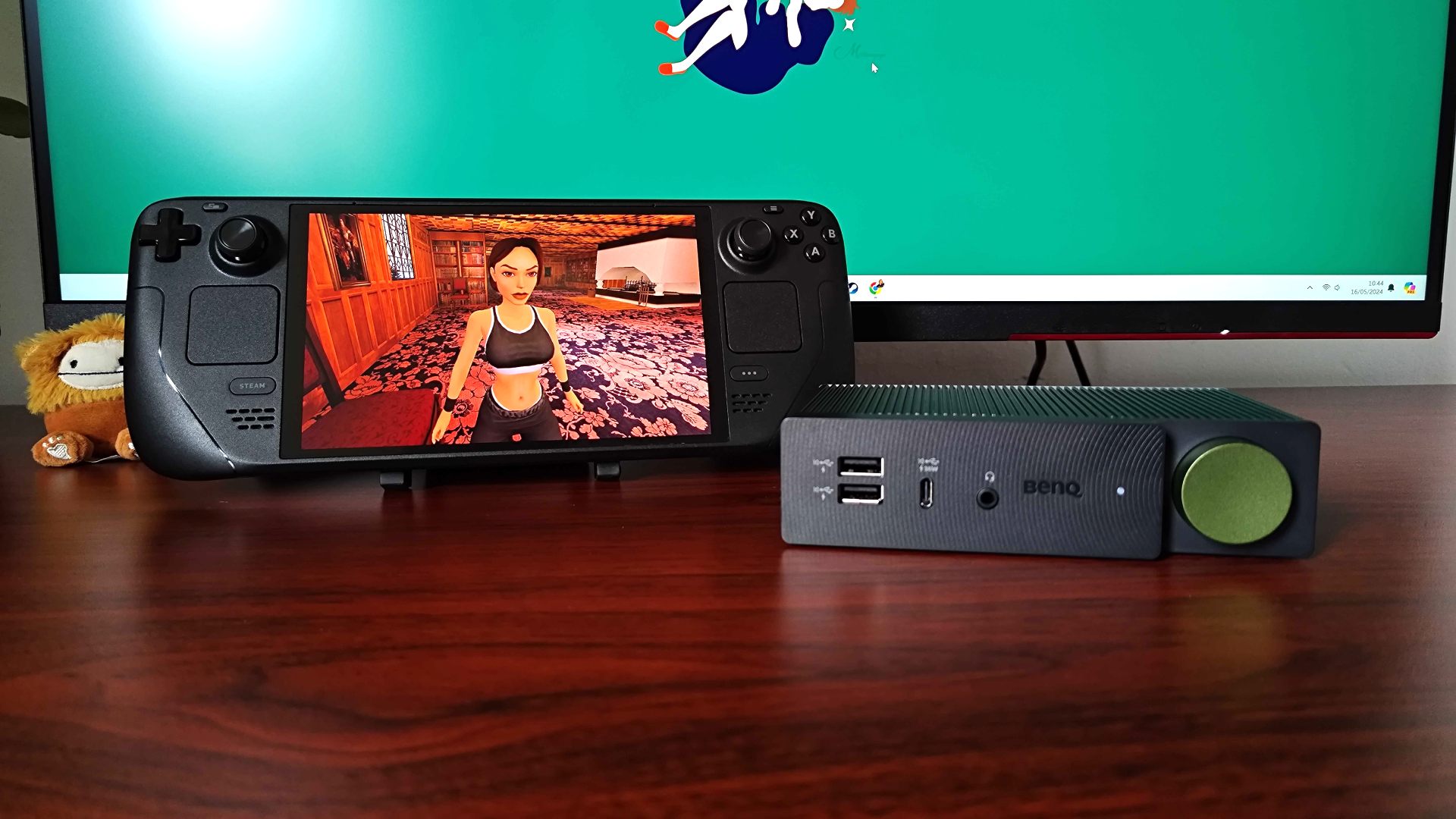
It’d be slightly bananas to tell you to pick up the BenQ BeCreatus if you’re merely looking for a way to connect a Steam Deck to a TV or monitor. Yet, if you’ve got an extremely busy desk setup that features handhelds, laptops, and consoles, this pricey peripheral will act as a pleasing visual bridge between them.
Build quality, multi-monitor capabilities, and the Power Delivery capabilities of the BeCreatus all help it become one of the top Steam Deck dock alternatives in my eyes, especially if your display doesn’t have similar integrated functions. KVM switching would have elevated this docking station to loftier heights, but most users are going to be hyped with its source-hopping abilities regardless.
How I tested the BenQ BeCreatus
For two weeks, I used the BenQ BeCreatus as my main docking station for handhelds and laptops. During that time, I hooked up the dock to a 4K monitor alongside my Steam Deck and PS5 using USB-C and HDMI 2.1. I also used a mouse, keyboard, and USB controller to test gaming and productivity capabilities. To assess Power Delivery capabilities, I also hooked up other accessories like power banks and headsets to see whether I could successfully charge add-ons alongside higher-wattage devices without a hitch.
For a full rundown of how we test docking stations and other accessories, swing by our GamesRadar+ Hardware Policy to learn more.
Looking for new screens? Swing by the best 4K monitor for gaming and best curved gaming monitors for a selection of punchy panels. You might also want to peek at the best standing desk if you're tired of sitting around.

I’ve been messing around with PCs, video game consoles, and tech since before I could speak. Don’t get me wrong, I kickstarted my relationship with technology by jamming a Hot Wheels double-decker bus into my parent’s VCR, but we all have to start somewhere. I even somehow managed to become a walking, talking buyer’s guide at my teenage supermarket job, which helped me accept my career fate. So, rather than try to realise my musician dreams, or see out my University degree, I started running my own retro pop culture site and writing about video games and tech for the likes of TechRadar, The Daily Star, and the BBC before eventually ending up with a job covering graphics card shenanigans at PCGamesN. Now, I’m your friendly neighbourhood Hardware Editor at GamesRadar, and it’s my job to make sure you can kick butt in all your favourite games using the best gaming hardware, whether you’re a sucker for handhelds like the Steam Deck and Nintendo Switch or a hardcore gaming PC enthusiast.
